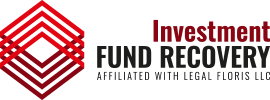Follow the Money
The phrase “follow the money” is often associated with investigating financial transactions to uncover crime, corruption, or other illicit activities. It is an essential aspect of forensic accounting and clawback procedures, which involve the identification, recovery, and repatriation of illicitly acquired assets. This article aims to provide an in-depth understanding of the process of following the money, its importance in detecting wrongdoing, and the challenges faced by investigators and financial crime professionals in this complex pursuit.
“Follow the money” refers to the practice of examining financial transactions and records to detect criminal activity or corruption. This process involves tracing the flow of funds through various accounts, financial institutions, and jurisdictions to identify patterns indicative of illicit activities such as money laundering, embezzlement, or fraud.
Forensic Accounting: A Crucial Tool in Following the Money
Forensic accounting is a specialized field that combines accounting, auditing, and investigative skills to analyze financial information and detect irregularities that may indicate criminal activity. Forensic accountants play a vital role in the process of following the money by:
- Analyzing financial records: Forensic accountants scrutinize financial statements, bank records, and other financial documents to identify discrepancies, unusual transactions, or other indicators of potential wrongdoing.
- Tracing assets: They trace the movement of assets through various accounts and financial institutions to identify the origins and destinations of illicit funds.
- Identifying illegal activities: Forensic accountants use their expertise to detect illegal activities such as money laundering, fraud, or embezzlement.
- Assisting legal proceedings: They provide expert testimony and support legal proceedings, such as criminal prosecutions, civil lawsuits, or asset recovery actions.
Clawback Procedures: Recovering Illicitly Acquired Assets
Clawback procedures involve the identification, recovery, and repatriation of assets that have been illicitly acquired through criminal activities or corruption. These procedures can be initiated by governments, law enforcement agencies, or private entities, depending on the jurisdiction and the nature of the assets involved. Some key components of clawback procedures include:
- Asset tracing: Identifying the location and ownership of illicit assets is a crucial step in the clawback process. This may involve the use of forensic accounting techniques, as well as cooperation with foreign governments and financial institutions.
- Asset freezing: Once illicit assets have been identified, it is essential to prevent their dissipation or transfer to third parties. This may involve obtaining court orders to freeze bank accounts, seize property, or impose other forms of asset restraint.
- Asset recovery: The ultimate goal of clawback procedures is to recover and repatriate illicit assets to their rightful owners or beneficiaries. This may involve initiating legal proceedings, such as civil lawsuits, criminal prosecutions, or international arbitration.
- Asset management and disposition: Recovered assets must be properly managed and disposed of, either by returning them to their rightful owners or by using them to compensate victims or fund public services.
Challenges in Following the Money
While the process of following the money can be an effective means of detecting and combating crime and corruption, it is also fraught with challenges:
- Complexity of financial transactions: The growing sophistication of financial systems and the increasing use of technology have made it more difficult to trace and analyze financial transactions. Criminals often employ complex schemes and structures, such as shell companies, offshore accounts, and layered transactions, to obfuscate the origins and destinations of illicit funds.
- Cross-border and multi-jurisdictional issues: The global nature of financial transactions means that assets and transactions may span multiple jurisdictions, which can complicate the investigative process. Differences in legal systems, regulations, and law enforcement capabilities can create obstacles for investigators attempting to trace funds and recover assets.
- Bank secrecy and data privacy laws: Some jurisdictions have strict bank secrecy or data privacy laws that can hinder investigators’ access to crucial financial information. These laws may prevent financial institutions from disclosing customer information, even when there is a suspicion of illicit activity.
- Resource constraints: Following the money often requires significant time, expertise, and resources. Law enforcement agencies and financial institutions may face challenges in allocating sufficient resources to conduct comprehensive financial investigations, particularly in cases involving large-scale or transnational criminal networks.
- Lack of cooperation and information sharing: Effective investigation of financial crimes often requires close cooperation and information sharing among various stakeholders, including law enforcement agencies, financial institutions, and foreign governments. However, bureaucratic hurdles, jurisdictional disputes, and concerns over data security can impede collaboration and hinder the investigative process.
- Distinguishing between legal and illegal transactions: Not every transaction that appears suspicious is necessarily indicative of criminal activity. Investigators must be able to distinguish between legal and illegal transactions, which can be challenging, given the sheer volume of financial transactions and the increasingly sophisticated methods used by criminals to disguise their activities.
Despite these challenges, following the money remains a critical tool in the fight against financial crime and corruption. By developing specialized skills and leveraging international cooperation, forensic accountants, law enforcement agencies, and financial institutions can work together to trace illicit funds, hold wrongdoers accountable, and ultimately disrupt and dismantle criminal networks.
